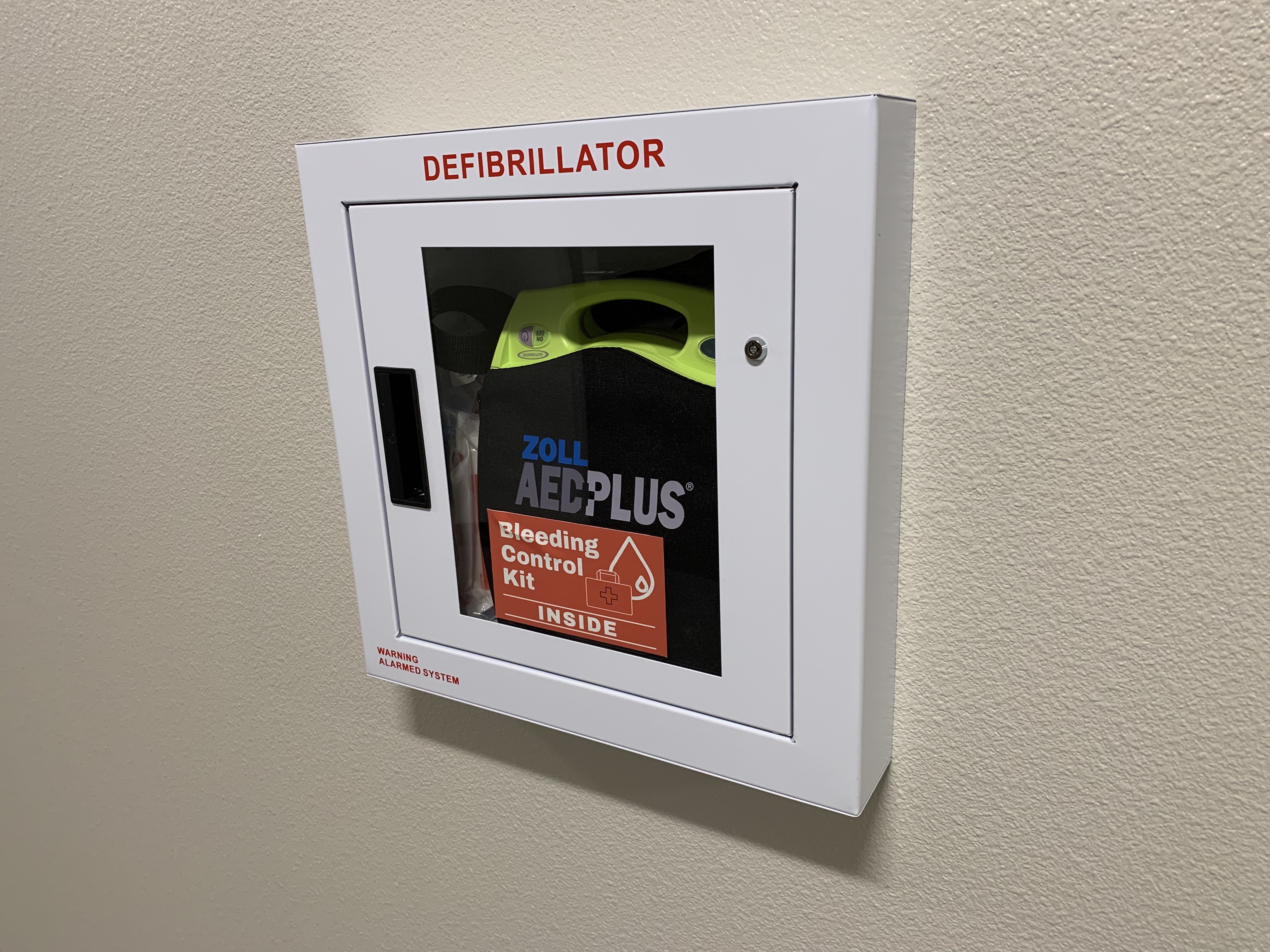A Medical Emergency is defined as a life-threatening injury or illness (i.e., severe burns and wounds, heart attack, stroke, head trauma) which poses a serious risk to the individual's life and requires immediate medical attention. Laypersons should provide reasonable aid until emergency personnel arrive and take over.
 |
 |
| Can happen at any time | Can happen to anyone |
- Make sure that the area is safe to approach.
- Check for responsiveness by shouting, “Are you OK.” if responsive, introduce yourself and ask to help. If unresponsive, then tap on the person’s shoulders and shout again.
- If the victim says they do not want help, then stop any assistants and wait for them to pass out. In Texas, when a person is unresponsive and unconscious, consent to help is assumed.
- As a good Samaritan who is trying to help, you are protected by the Texas Good Samaritan law.
- Before a Medical Emergency
- During a Medical Emergency
- Medical Facilities
- Safety Hubs
To prepare for a potential medical emergency, consider the following steps:
Get Involved: Receive CPR/AED and First Aid Training.
Research: Know the location of the closest Automatic External Defibrillator (AED) and Stop the Bleed Kits.
Supply: Keep a personal or office first aid kit.
Emergency Contact: Update emergency contact information in Banner in case family, friends, or loved ones must be contacted in an emergency.
If an individual suffers an injury or becomes ill and requires immediate medical attention, the following actions should be taken.
Alert: Immediately contact 9-1-1 and relay the following information:
- Nature of the injury or illness
- Victim's location
- Identity of the victim
- Suspected or known cause of the injury or illness
Aid: Provide first aid or medical assistance as necessary, if trained.
- If the victim is unconscious and not breathing, locate an AED if available, turn it on and follow the instructions provided by the unit.
- If the victim is bleeding out, locate a stop the bleed kit if available, open the package and follow the instructions.
Do not provide First Aid or CPR if not properly trained and certified to do so. To obtain First Aid or CPR training, contact the American Red Cross of the National Capital Area or the American Heart Association for a list of training dates and locations. Depending upon your job description, you may be eligible for First Aid or CPR/AED training through the university. Contact your supervisor for more information.
List of Emergency Medical Facilities in the area.
| United Regional Emergency Room | Kell West Regional Hospital | ER Now 24/7 Emergency Room |
List of Medical Facilities in the area.
| Vinson Health Center | United Regional Emergency Room | ER Now 24/7 Emergency Room |
|
3410 Taft Blvd. Wichita Falls, TX 76308 940-397-4231 |
Most buildings on campus provide emergency and lifesaving resources to faculty, staff, and students.
The safety hub consists of the following components:
- Automatic External Defibrillator (AED)
- Bleeding Control Kit
- Building Name, Address, and Acronym Signage

An Automatic External Defibrillator is designed to deliver an electrical shot to a person having a Cardiac Arrest. Early defibrillation is proven to save lives. The sooner an AED is used on a person in Cardiac Arrest, the better chance of survival. Using an AED is simple: Turn on the AED, Follow the Prompts, and Press the Shock Button if Instructed.
These tools and classes are designed to help you be prepared for an emergency requiring the use of an AED and/or CPR.
Instructional classes for CPR/AED certification training are provided on campus on a regular basis. To sign up for CPR/AED training, contact the Office of Risk & Safety.
During an emergency, timely actions are important to save lives. Depending on the emergency, first responders may not be able to render aid to all victims in a quick manner, and uncontrolled bleeding can result in death within minutes. The bleeding control kits are designed to provide the necessary resources to stop the bleeding until the emergency responders can arrive and provide the appropriate aid. The bleeding control kits provide all the necessary equipment to control bleeding, including; a tourniquet, trauma dressing, gloves, black ink marker, and proper instructions.
The bleeding control kits are designed to be public access and provide a quick life-saving resource that is easy to use when following the instructions. Training classes are available for the bleeding control kits; for information about training classes, please contact the Office of Risk & Safety.
More information about Stop The Bleed!
